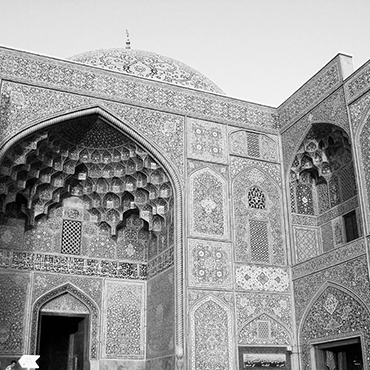A RISING COST OF LIVING...
Life in the Islamic Republic is becoming increasingly unaffordable for the average Iranian. A new report from the Iranian Labour News Agency (ILNA) notes that costs for "essential goods and services" inside the country have risen by at least 40% since this summer. The price hike is said to be the result of a reduction in government price controls, which have led to skyrocketing costs on housing, foodstuffs and utilities. The report, entitled From Electricity to Eggs: Everything Has Become More Expensive, describes the situation as being like a "price liberalization bomb" which has impacted virtually every sector of the national economy. (Iran International, November 27, 2024)
...AND A GROWING ENERGY CRISIS
Meanwhile, energy conditions with Iran are getting worse – with potentially dire consequences for ordinary Iranians, as well as the regime. In recent remarks, Mohammad Bagher Ghalibaf, the speaker of Iran's parliament, or majles, warned of an escalating energy crisis that could create catastrophic domestic conditions this winter. Iran, Ghalibaf cautioned, is facing a growing "consumption imbalance" as natural gas production slows and domestic demand soars. The resulting shortage "has resulted in widespread power outages and industrial declines," Iran International notes. These include plummeting steel production, which fell by nearly half over the summer, and a petrochemical sector that is now estimated to be operating at only 70% capacity. (Iran International, November 26, 2024)
TEHRAN'S TIES TO OCTOBER 7TH
Ever since the campaign of terror carried out by Hamas in southern Israel on October 7, 2023, speculation has swirled as to whether the Palestinian extremist group's actions were directed by its chief state sponsor, Iran. Now, documents examined by one of Israel's leading intelligence centers have drawn the most conclusive connections. A new report by the Meir Amit Center Intelligence and Terrorism Center, an NGO closely connected to the Israeli intelligence community, and based on files collected by the Israeli Defense Forces in the course of combat operations in the Gaza Strip, has underscored key details about the Hamas attack, and the larger relationship between the Palestinian militant group and the Islamic Republic.
"Hamas documents taken by IDF forces in the ground operation in the Gaza Strip... provide a rare glance at the extent of Iran's penetration into Hamas as part of building its 'axis of resistance' against Israel," the report lays out. "The documents teach us about Iran's strategic process of establishing their foothold and influence in what happens in Hamas specifically and Gaza generally." Among the details encapsulated in the report is that Iran provided advance funding that significantly expanded Hamas' military capabilities, and that Hamas planned to carry out "infiltration actions" against Israel in tandem with Lebanon's Hezbollah, another Iranian proxy. (Jewish Insider, November 18, 2024)
IRAN'S ILLICIT IRAQI FUEL SCHEME
Despite ongoing Western sanctions under the current Administration – and the prospects of a return to "maximum pressure" once Donald Trump reenters the Presidency early next year – the Iranian government is continuing to rake in revenue from a thriving illicit fuel network. Industry sources say that Iran's fuel smuggling is responsible for $1 billion or more in revenue amassed by the regime every year, relying on a scheme that diverts fuel from the construction sector in neighboring Iraq – where Tehran continues to wield extensive influence. The result is that "anywhere from 500,000 to 750,000 metric tons of heavy fuel oil (HFO), including high sulphur fuel oil (HSFO) - equivalent to 3.4 million to 5 million barrels of oil - is diverted from the plants each month and exported, mostly to Asia," Reuters reports. (Reuters, December 3, 2024)
TEHRAN LOSES GROUND IN SYRIA
In 2015, in the midst of the Syrian civil war, the regime of dictator Bashar al-Assad found itself on the back foot and turned to Russia and Iran for assistance. Both countries answered the call, deploying forces to bolster Assad's army. Iran, however, did something more – it imported an estimated 10,000 civilians into the country as well, swelling Syria's Shi'a population in the process. But with the rapid collapse of the Assad regime in Damascus earlier this month, that trend has begun to reverse. In recent days, Tehran has reportedly helped to repatriate thousands of Iranian citizens from Syria, amid fears that the new government headed by Sunni jihadi group Hayat Tahrir al-Sham could take political or sectarian vengeance.
Iranian civilians, moreover, are not the only ones eyeing the Syrian exits. Russia's official TASS news agency reports that the country's armed forces, which remain active in Syria, have helped to evacuate some 4,000 Iranian fighters from Syria, where they had previously been operating in support of the Assad regime. (Al Arabiya, December 10, 2024; TASS, December 19, 2024)

